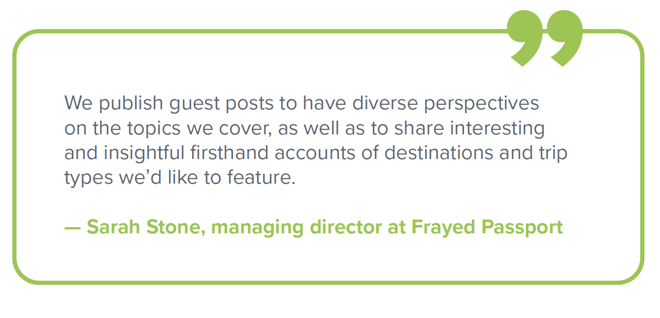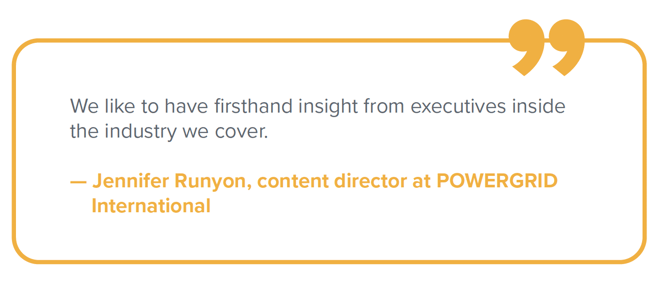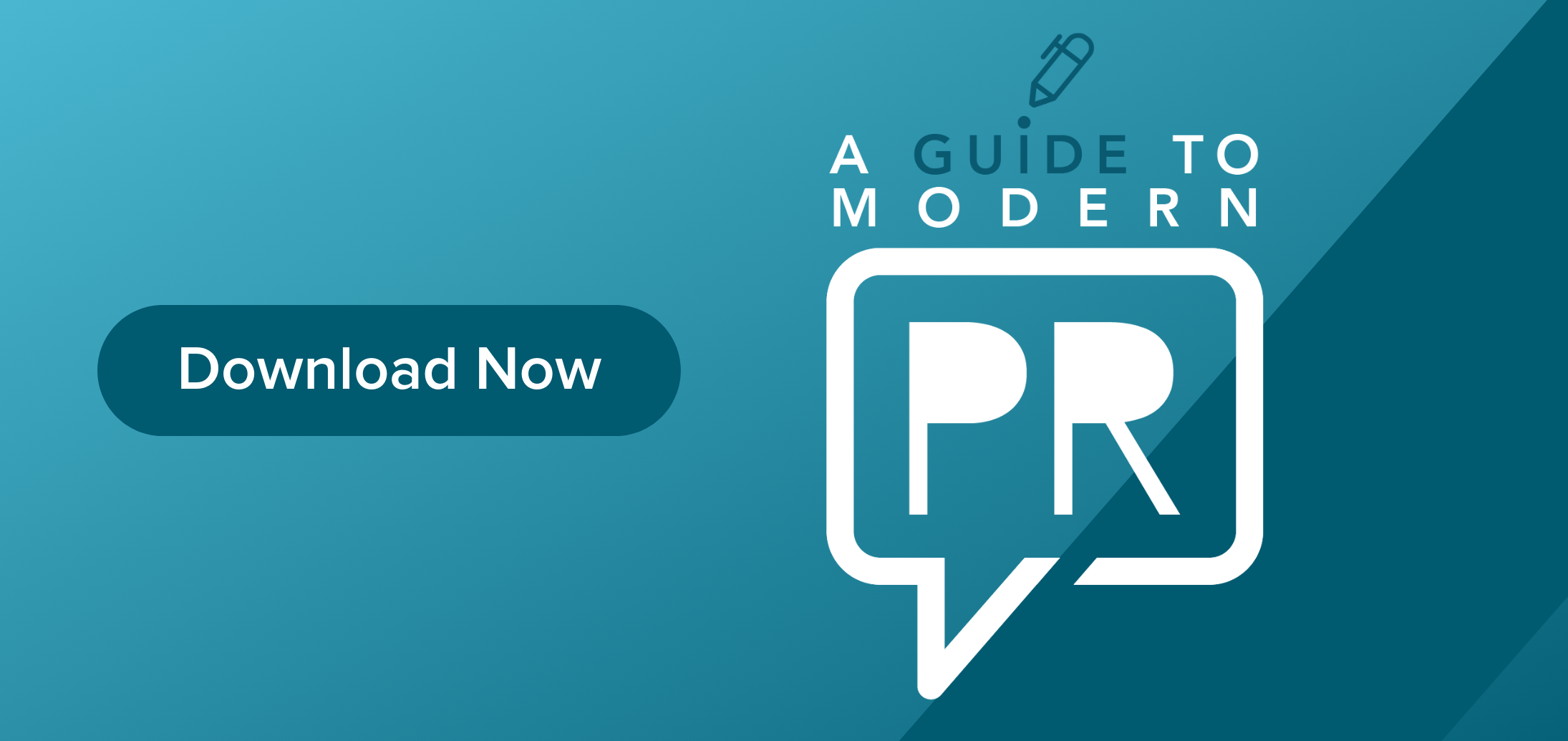Originally published July 31, 2018. Updated Feb. 21, 2023.
Reaching and engaging new audience members is essential for any organization. Expanding the reach of your message and generating awareness about your brand fuels growth for your entire business — and that's what makes public relations so important.
With public relations responsible for such fundamental goals, it's critical that everyone on your team understands what public relations actually is. That means knowing its full range of benefits, how it functions with your other communications efforts, and what it takes to build a public relations strategy that works for you.
What Is Public Relations?
At its core, public relations is about the ways your brand communicates with the people in your audience. PR is about the stories you tell, the relationships you build, and the press you earn to help people connect with your brand in a positive way. It's different from marketing, which is specifically tasked with generating revenue, and it's different from advertising, which relies on paid promotion to share your messages.
According to the Public Relations Society of America:
“Public relations is a strategic communication process that builds mutually beneficial relationships between organizations and their publics.”
Public relations is strategic in that your organization uses it to achieve certain goals, and it's mutually beneficial in that, when done right, it's a practice that helps you, your media contacts, and your audiences at the same time.
Now, what does this look like in practice?
Using tactics like press release distribution, social media outreach, pitches to editors and journalists, original content creation, award and speaking opportunities, and more, you can generate positive media coverage, earn relevant backlinks, and gain exposure to new audiences you might otherwise not have access to.
To leverage any of these tactics as part of a successful public relations strategy, it's helpful to put them in context. PR has undergone some major changes over the past few years, and understanding what's prompted these changes is essential for navigating the industry today.
—
Send better pitches and get your content published with this free email template:

—
The Evolution of Public Relations
Somewhat ironically, public relations hasn't always had the best image. Early industry pioneers often relied on tactics that modern practitioners and audiences might consider spammy or manipulative.
As a whole, PR was often seen more as a way to control the narrative around a brand than as a process for building those mutually beneficial relationships the PRSA highlights in its definition. And to that end, PR professionals focused a lot of energy on self-promotion — sometimes at their audiences' expense. This exclusively brand-centric approach to pitching and placement seemed to work well enough, but the internet has changed the game.
As digital content and social media have given power to audiences, expectations around authenticity have changed, and PR has evolved to meet those expectations. Modern PR is less transactional and more relational than ever before.
Public relations today is still responsible for many of the same goals as its early days: generating awareness, building credibility, and reinforcing a positive brand image with your audiences. The biggest difference between traditional PR and modern PR is in the way you execute your strategy.
Modern PR is built on relationships with a diverse range of media contacts — from traditional journalists and reporters to thought leaders, publication editors and contributors, and industry influencers — and your ability to deliver genuine value to the audiences you share with those contacts. It's not about mass-produced templates exchanged for quick wins.
The Rising Demand for Authenticity and the Shift to Audience Value
Where do you go for information? Probably to sources you trust: high-quality publications, media outlets, and blogs; reputable journalists and editors; and thought leaders, influencers, or other peers in your industry. And when you reach those sources, you're looking for something of genuine value to you.
So are your audience members. With so much content so easily available, audiences are getting better at recognizing information and sources that don’t offer value and finding ones that do — and so are the reporters, journalists, editors, and other online content contributors you're trying to pitch.
The Influence & Co. team surveys online publication editors across industries to understand what these essential media contacts are looking for from the outside experts they work with.
—
Unlock our 2023 research on the state of contributed content to inform your public relations strategy with new insights and data.

—
Our 2023 research found that the biggest reason publication editors and content managers reject pitches from guests is that they're too promotional. In addition, editors cited irrelevant content as a problem with pitches from outside contributors.
Note: It's important to understand that PR and guest posting are not the same. Guest posting is content that comes from you, not from an outside source.
Still, your media contacts are looking to publish content that engages their audience. Insight into what editors are looking for from external contributors can inform the pitches you send as part of your PR strategy.
According to our 2023 "The State of Contributed Content" report, the biggest reason editors accept and publish guest content is to share fresh perspectives, expert opinions, and variety in the content they provide to their audiences.
 The biggest reasons journalists and contributors include press mentions in their articles are to diversify opinions, provide unbiased views and a wider perspective, infuse authenticity into their content, and add third-party credibility.
The biggest reasons journalists and contributors include press mentions in their articles are to diversify opinions, provide unbiased views and a wider perspective, infuse authenticity into their content, and add third-party credibility.
 Instead of relentlessly pitching a list of ways your company is amazing or touting how cool your new product is, try working alongside contributors, journalists, editors, influencers, and thought leaders to deliver value to the audiences you share — and turn your relationship into a truly mutually beneficial one.
Instead of relentlessly pitching a list of ways your company is amazing or touting how cool your new product is, try working alongside contributors, journalists, editors, influencers, and thought leaders to deliver value to the audiences you share — and turn your relationship into a truly mutually beneficial one.
Public Relations vs. Marketing
If this whole approach to public relations sounds familiar, that's because it echoes some key themes of content marketing, such as a focus on building trust, providing value, and avoiding short-sighted self-promotion. It also highlights a growing trend in the marketing and PR fields: greater alignment between these two essential functions.
—
Align all of your communications efforts under one cohesive strategy.

—
According to PRWeek and Intrado’s 2020 research, 83% of PR professionals say that the lines between PR and marketing are more blurred than ever, and 98.2% recognize the importance of mastering and applying marketing competencies.
.png?width=730&name=What%20is%20PR%20Content%20Update%20%5Bfinal%20intext%20graph%5D%20(1).png)
However, just because greater alignment is on the horizon, that doesn't make these two strategies one and the same. While they are complementary, marketing and PR are ultimately still different.
For example, one piece of content you've published to your company blog as part of your content strategy is probably not going to be enough to transform your brand into a credible, trustworthy resource.
To build that kind of relationship on your own, you'll need to consistently create and distribute high-quality, educational content and keep your audience engaged over time. Once your audience knows it can come to you for valuable and helpful content, you'll have earned its trust.
That process is accelerated with the right kind of press.
Well-placed press mentions — which, as the name suggests, are mentions of your brand by the press — can help you build trust much more quickly. When someone your audience already trusts sings your praises in a reputable publication, you benefit from instant credibility and third-party validation.
—
One press mention helped our client generate four new brand deals.

—
Here's the thing: Neither PR nor content marketing really reaches its full potential without the other. Here's how the relationship works:
- Your content is your foundation. Your website, blog, social media, email newsletters — they're all content that you control. That's how you start building your brand, establishing your expertise, and becoming a thought leader in your industry.
- With that foundation of valuable content, you can begin securing press opportunities: quotes or mentions in articles, interviews on podcasts, and even awards and speaking engagements. They might be completely organic, or they might be opportunities you pursue. Either way, they're made possible because of the brand you've built through content.
- Press helps you reach new audiences who trust you enough to check out your website and see who you are. And because of all that really great content you've published on your site, you can engage those visitors and solidify their trust.
When your PR and content marketing work together, you get the best of both worlds: Your audience members hear great things about you from sources they trust, and they learn valuable things from you once they begin engaging with your brand and the content you surround yourself with.
How to Start Building a Modern Public Relations Strategy
Public relations can help you generate brand awareness, gain exposure to new audience members, earn positive media coverage, and build trust and credibility. But it doesn't do any of these things by accident; achieving your goals and seeing content marketing ROI requires a solid plan that works with your other efforts to reach its full potential. Below are four things to keep in mind to start building a PR plan that works for you:
1. Identify your audiences and where they are online.
The first step to reaching any audience is knowing who that audience is. So determine who exactly you're trying to reach with your messages and where those audiences go online to consume content.
What are the different groups you're trying to reach? What publications, media outlets, blogs, or social platforms are they looking at to discover content? What influencers, journalists, thought leaders, and publication contributors do they trust?
Once you know where your audience members are and who they already trust for valuable information, you can start figuring out ways to earn media that reaches them where they are.
2. Develop content that appeals to those audiences.
The content you're creating for these PR purposes can range from a fairly well-developed article to a potential outline for an article to a simple topic idea or story angle. No matter what form the content takes at this point, your goal should be to deliver value to your audience and, therefore, to the media contact you're reaching out to.
To get a feel for how well your content balances everyone's needs, ask yourself:
- Does this align with my brand's goals?
- Does this offer unique value to the readers? To my media contact?
- Does this make sense with my contact's voice and the other topics they cover?
The content you're developing should pass each of these questions with a clear "yes." If it doesn't, rework parts of it until it's truly valuable to everyone involved.
—
Are you creating the right content for your public relations goals? Take our content marketing assessment quiz to find out.

—
3. Send pitch emails that cut through the clutter.
Reporters, journalists, publication editors, and thought leaders are busy people, and they're probably getting dozens, if not hundreds, of emails every single day. If you want your pitch to be considered, it has to cut through the rest of the inbox noise.
To send a great pitch, make sure your email is compelling, clear, and respectful. Your subject line needs to capture attention, so avoid anything like "Story Pitch for [Brand Name]" or "Article" — nothing this generic will set you apart or convince someone to open your email. And when your subject line does prompt your contact to read your email, make sure the pitch clearly and quickly explains who you are, what you're sending, and why it matters.
4. Share your press.
If all goes well — if your pitch makes it through, if your contact likes your story, and if the story gets published — then you've earned your media coverage. Congratulations! But your work isn't finished.
Now that you have this earned media, it's time to collaborate with your marketing team to put it to use. Consider adding publication badges to your company's press page, sharing the news via social media and email, and adding it to your email signature as a way to boost your credibility for future media outreach.
When this press is amplified, it's able to reach more people and continue spreading your brand's message. That's central to PR's goals, and it contributes to the content marketing and PR cycle, making both strategies more effective.
Public relations is an integral part of your company's growth. Done right, PR helps you increase brand awareness, generate valuable media opportunities, gain credibility, and build trust with the audiences that matter most to you. Understanding exactly what PR is and how it works with marketing is key to unlocking its full potential.
Looking for more information on how you can use PR to reach your content marketing goals? Download your free guide to modern public relations below.









.png?width=730&name=What%20is%20PR%20Content%20Update%20%5Bfinal%20intext%20graph%5D%20(1).png)






